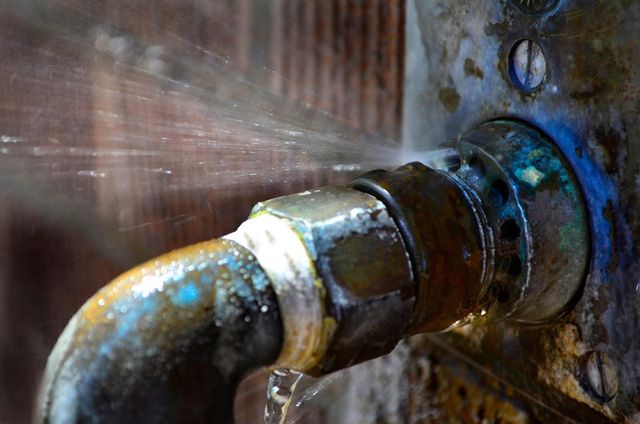6 Ways to Find Concealed Water Leaks in Your Home
6 Ways to Find Concealed Water Leaks in Your Home
Blog Article
Everybody is bound to have their unique thinking in relation to Leaking water lines.

Early detection of leaking water lines can reduce a possible calamity. Some little water leaks might not be visible.
1. Analyze the Water Meter
Every home has a water meter. Checking it is a proven manner in which assists you discover leaks. For beginners, switch off all the water resources. Ensure no one will certainly purge, make use of the faucet, shower, run the washing machine or dishwasher. From there, go to the meter as well as watch if it will certainly transform. Considering that no one is utilizing it, there need to be no motions. If it relocates, that shows a fast-moving leakage. Also, if you discover no changes, wait an hour or 2 as well as check back again. This means you may have a slow-moving leakage that can also be below ground.
2. Examine Water Intake
If you spot abrupt adjustments, despite your usage being the same, it means that you have leakages in your plumbing system. An abrupt spike in your bill suggests a fast-moving leak.
A steady increase every month, even with the very same habits, shows you have a slow-moving leak that's likewise gradually rising. Call a plumber to completely inspect your property, particularly if you feel a cozy area on your floor with piping underneath.
3. Do a Food Coloring Test
When it comes to water consumption, 30% comes from toilets. If the shade somehow infiltrates your bowl during that time without flushing, there's a leakage between the tank as well as bowl.
4. Asses Outside Lines
Do not fail to remember to examine your outdoor water lines as well. Examination spigots by connecting a yard hose pipe. Must water permeate out of the connection, you have a loose rubber gasket. Replace this as well as guarantee all connections are tight. If you've got a lawn sprinkler, it will help get it expertly examined and maintained each year. One tiny leakage can squander lots of water and spike your water bill.
5. Examine as well as Evaluate the Circumstance
Property owners ought to make it a practice to check under the sink counters as well as also inside closets for any bad odor or mold and mildew growth. These 2 warnings show a leakage so timely attention is needed. Doing routine evaluations, even bi-annually, can save you from a major problem.
Much more importantly, if you recognize your residence is currently old, maintain a watchful eye on your heating systems, pipes, pipelines and so on. Check for stainings and deteriorating as many pipelines and appliances have a life span. They will certainly also naturally degrade due to deterioration. Don't wait for it to escalate if you presume leaking water lines in your plumbing system. Call a professional plumber right now so you don't wind up with a horrible mess in your home.
Early discovery of leaking water lines can mitigate a possible catastrophe. Some little water leakages may not be visible. Inspecting it is a proven method that assists you discover leakages. One small leakage can waste heaps of water and also increase your water expense.
If you suspect dripping water lines in your plumbing system, don't wait for it to intensify.
WARNING SIGNS OF WATER LEAKAGE BEHIND THE WALL
PERSISTENT MUSTY ODORS
As water slowly drips from a leaky pipe inside the wall, flooring and sheetrock stay damp and develop an odor similar to wet cardboard. It generates a musty smell that can help you find hidden leaks.
MOLD IN UNUSUAL AREAS
Mold usually grows in wet areas like kitchens, baths and laundry rooms. If you spot the stuff on walls or baseboards in other rooms of the house, it’s a good indicator of undetected water leaks.
STAINS THAT GROW
When mold thrives around a leaky pipe, it sometimes takes hold on the inside surface of the affected wall. A growing stain on otherwise clean sheetrock is often your sign of a hidden plumbing problem.
PEELING OR BUBBLING WALLPAPER / PAINT
This clue is easy to miss in rooms that don’t get much use. When you see wallpaper separating along seams or paint bubbling or flaking off the wall, blame sheetrock that stays wet because of an undetected leak.
BUCKLED CEILINGS AND STAINED FLOORS
If ceilings or floors in bathrooms, kitchens or laundry areas develop structural problems, don’t rule out constant damp inside the walls. Wet sheetrock can affect adjacent framing, flooring and ceilings.
https://www.servicemasterbyzaba.com/blog/how-to-detect-water-leakage-in-walls/

I ran across that review about Hacks to detect leaks when surfing the search engines. Appreciated our piece? Please share it. Help somebody else find it. Many thanks for taking the time to read it.
Report this page